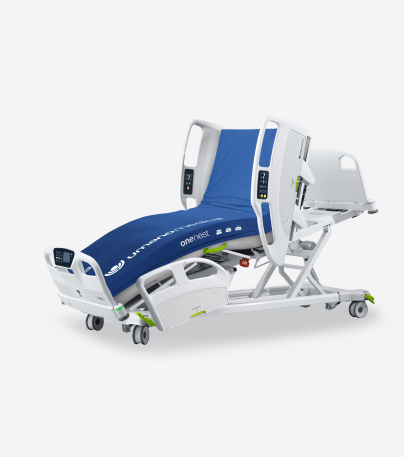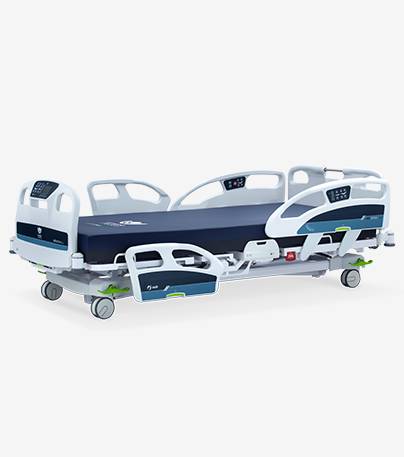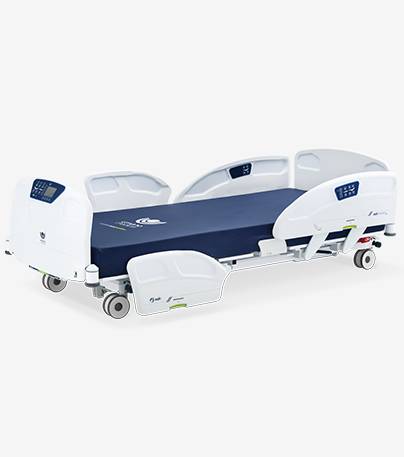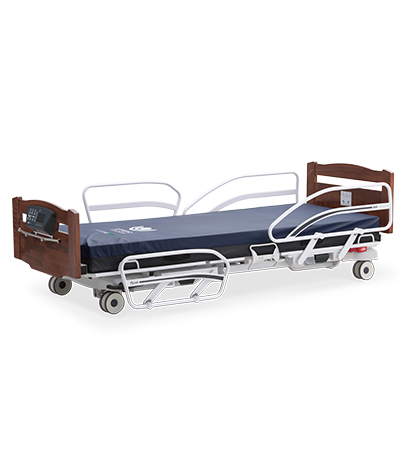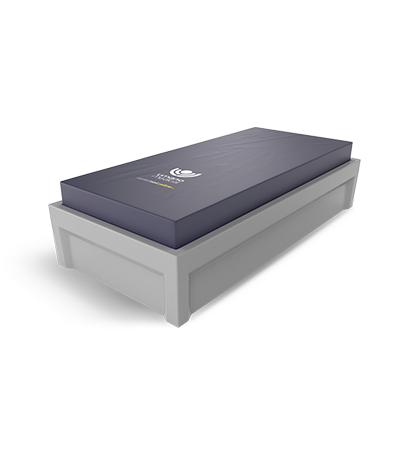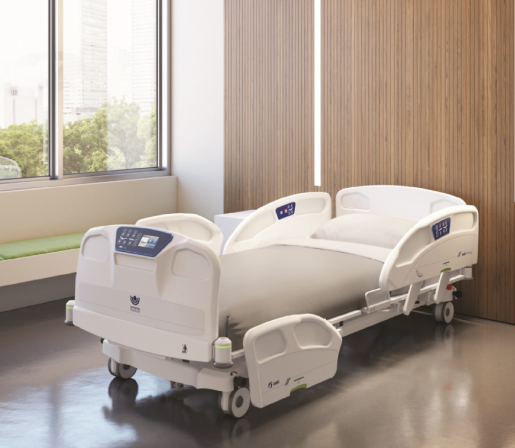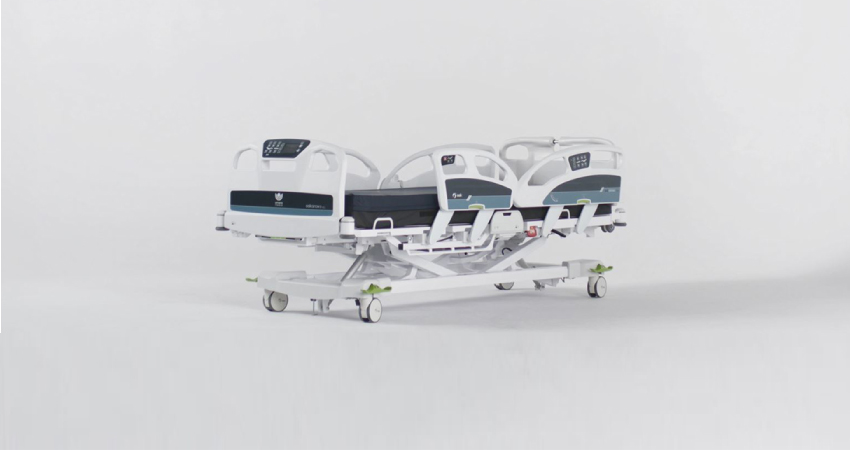
Utilizing Today’s Hospital Beds to Support your Fall Prevention Programs

By Caroline Grimard
Product Manager
Published on November 16, 2021
Falls associated with serious injuries are among the top 10 reported events according to the Joint Commission¹. Health care professionals are constantly being challenged to put in place effective fall prevention programs to help minimize falls. One of the ways health care organizations can support their fall prevention programs is by ensuring that their hospital beds provide key features that aligns with their goals.
They are 5 main features to consider when using your hospital beds, or even with the purchase of new beds, to support fall prevention programs:
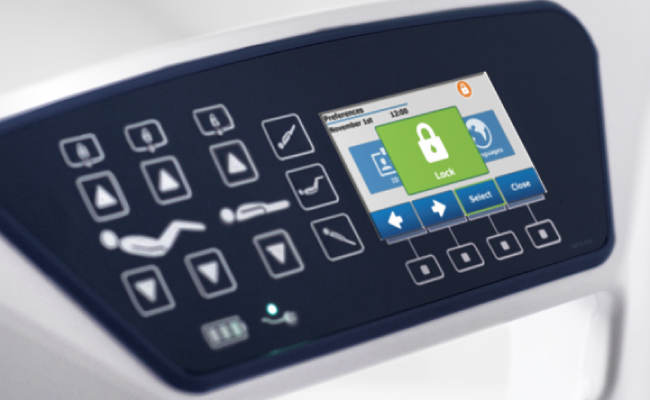
- Low height beds
- Bed-exit detection systems
- Bed event data and history logs
- Staff communication
- Clear view of surroundings
Low Height Beds
Low-height beds contribute to fall prevention programs, since fall incidents often take place when a patient tries to get out or back into bed. One of the best ways, according to the Joint Commission², of ensuring safe patient egress and ingress, is to keep the bed in the lowest position possible.
A study³ (Tzeng, 2010) in an acute care hospital found that 51.4% of the adult inpatient fall incidents and 56.0% of the adult inpatient injurious falls occurred while the patient was getting out of or back to the bed.
Keeping in the bed at a low height can ensure safe patient egress and ingress, and help support your fall prevention programs. There are beds that can go as low such as 10 inches from the patient deck to the floor. This allows for smaller patients to be able to sit and put their feet on the ground.
However, for a patient that is very tall, then perhaps this 10-inch low height is too low for them. For these instances, the nurse staff can configure a low height standard through the bed’s smart screen. The ability to customize the height of the bed can help improve fall prevention protocols put in place.
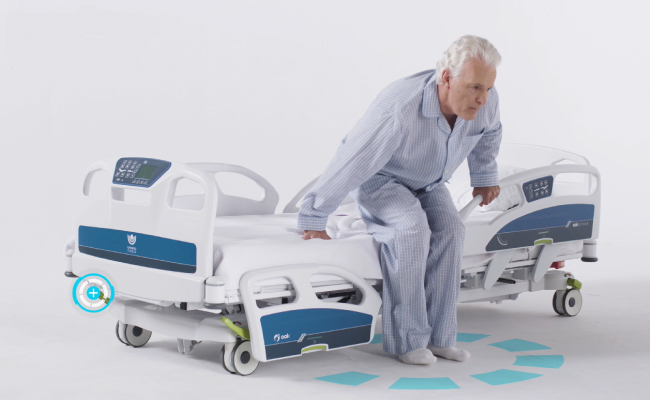
Hospital beds should also provide a clear zone for the heels – allowing the patient to exit the bed without any obstruction. It is important that the patient can comfortably sit on the edge of the bed and place their feet on the floor to feel more stable. Also, an ergonomic handgrip on the siderail is crucial to providing patients with that support to exit the bed.
Bed-Exit Detection Systems
Bed-exit detection systems can help staff proactively monitor patient movement while in bed. The Joint Commission⁴ recommends having preventative devices, such as alarms, to reduce fall events, and in a 2015 study⁵, the use of hospital beds with integrated three-mode sensitivity exit alarms resulted in a 20% decrease in falls, and a 40% decrease in falls causing an injury.
Medical beds can usually have various levels of monitoring. The three levels to look for are:
- When patient completely gets out of bed
- When the patient moves too close to the edge of the bed
- When the patient moves the upper torso
In addition to the bed-exit detection systems, the alarms should be visual and audible to better suit the needs of your team and your patients. These alarms can also be connected to nurse call systems to alert staff.
Bed event data & history logs
In a special sentinel event alert issued, the Joint Commission⁶ states that “employing data-driven analysis can help fall prevention teams to continually re-evaluate and improve the approach to patient falls prevention and injury reduction within specific setting.” This can be done from your hospital bed.
Medical beds can provide a history of bed event data – such as bed-exit and detection alarms. Tracking the history of these events and disclosing it throughout the hospital can help teams share and learn from other and be proactive. With connected solutions, bed data can also be viewed remotely and in real-time, making it even more easy to share in between staff and units.
Lastly, medical beds with integrated scales can provide accurate readings of patient weight while they are still in bed, providing even more information to the data log.

Staff communication
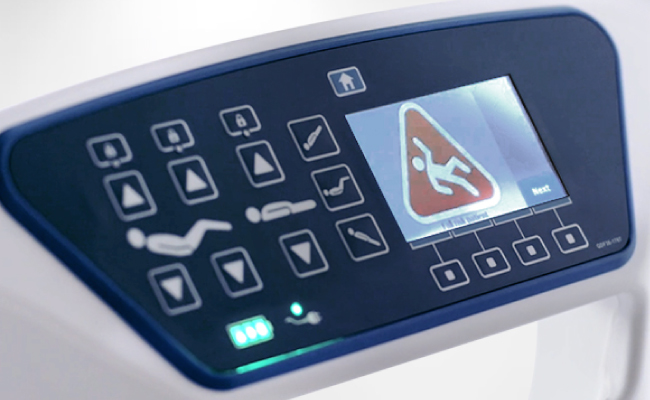
Clear view of surroundings
And finally, providing patients with a clear view of surroundings can help minimize the risk of falls. Research⁸ reveals that environmental factors commonly causing falls are related to tripping hazards and bad lighting - espacially in patients with poor balance. Hospital beds can be equipped with smart nightlights that automatically light up when a patient steps out of bed – providing patients with a clear view of surroundings to prevent trips or falls.
5 ways Umano Medical beds can help support your team’s fall prevention program
- Our line of hospital beds can go low and be configured to patient height without compromising overall functionality and compatibility with other equipment.
- Our hospital beds can be equipped with three levels of bed-exit detection to alert staff if a patient is about to move from the bed.
- Our beds provide event data and history logs, and can be viewed from the bed or remotely through connected solutions, allowing staff to make fact-based assessments and monitor fall prevention protocol compliance.
- Inform staff of fall-risk patients through our inform safety message centers found on our hospital bed smart screen.
- Umano Medical beds can be equipped with nightlights to give patients a clear view of surroundings before stepping out of the bed.
Discover our ook snow hospital bed, and how it can change the way your team develops its fall prevention program.
About the author

Caroline Grimard
More articles form Caroline Grimard

Headquarters
230 Nilus-Leclerc Blvd.
L'Islet, QC G0R 2C0
CANADA
1 844 409-4030
Lévis Office
470 3e Avenue
Lévis, QC G6W 5M6
CANADA
US Location
11845 Adie Rd.
Maryland Heights, MO 63043
UNITED STATES
Sherbrooke Office
670, Joseph-Louis-Mathieu Rd.
Sherbrooke, J1R 0X3
CANADA
Australia Office
Unit 4, 8 Abdon Close
Bennetts Green, NSW 2290
AUSTRALIA
Careers
Our talented and passionate team is determined to revolutionize the medical industry. Be part of the journey: join the Umano Experience.
See available jobsConnect with us
Copyright © 2025 Umano Medical inc

